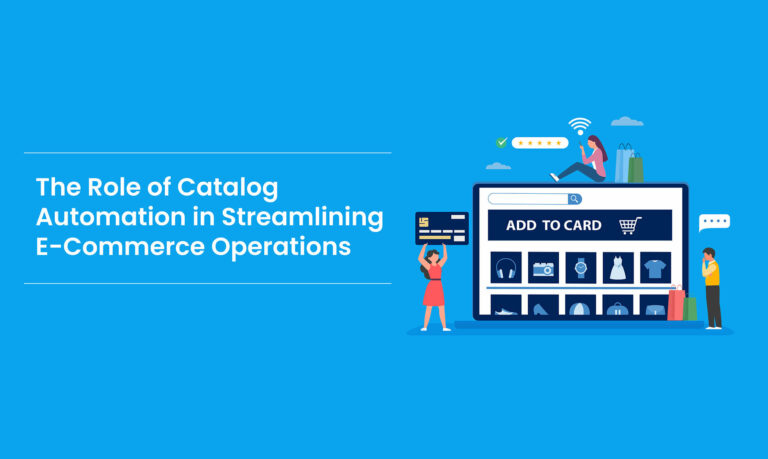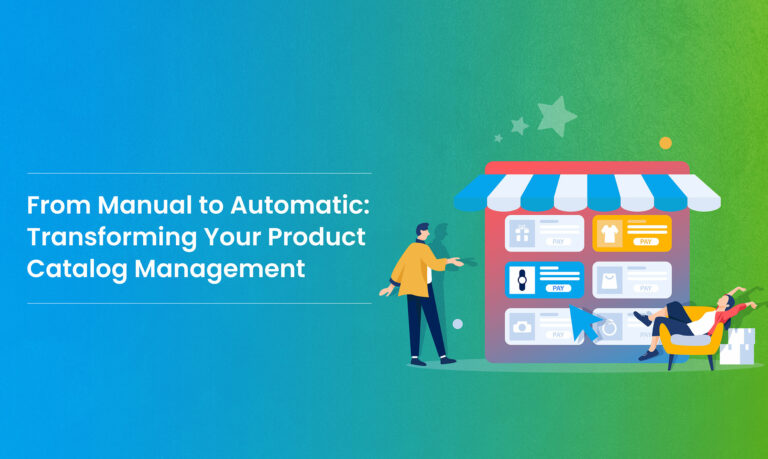What is content localization? Localizing content in e-commerce platforms involves modifying your content to fit the context of different markets, incorporating each market’s product names, descriptions, checkout pages, blogs, and even payment options This ensures convenience for customers and builds trust in the purchasing process. Using neural translation, accurate and swift localization of content is possible.
Following local laws and giving accurate, relevant legal information is essential. This covers adherence to regional laws, privacy policies, and conditions of engagement. Customers are reassured that the e-commerce platform complies with local laws, which builds confidence and trust.
eCommerce localization involves all shipment and delivery information, including freight rates and expected delivery timeframes. This openness lowers shipping-related worries and helps control client expectations while enhancing the after-sale experience.
Introduction
In today’s interconnected global landscape, businesses are consistently exploring opportunities beyond their domestic markets. To thrive in foreign markets, enterprises must harness the potential of e-commerce localization. By delivering localized content and personalized customer experiences, companies can elevate customer satisfaction, instill trust, and cultivate enduring relationships with their target audience.
Not too long ago, the majority of commercial activities were conducted offline. However, there has been a dramatic shift, with a significant preference for digital shopping and engagement with brands and stores through digital media platforms. This transformation compelled businesses to undergo digital evolution, and e-commerce emerged as the gateway to the global market. Yet, succeeding on the global stage is no simple feat; it demands substantial adaptation and influences achievable through e-commerce localization.
Localization goes beyond language translation services. Market relevance and cultural nuances play crucial roles in successful localization efforts. A deep understanding of local customs and behaviors is imperative to adapt services, products, and marketing strategies in a way that resonates with the target market.
Understanding E-commerce Localization
E-commerce localization is the comprehensive process of aligning an e-commerce store with the cultural acceptance of the local market. This encompasses all aspects, including content, products, product details, assets, blogs, and marketing materials necessary for conducting online business. The brilliance of integrating e-commerce localization lies in its ability to open doors to global markets through cross-cultural translation and multilingual features.
The primary goal of e-commerce localization is to embrace the cultural aspects of the local market to capture the attention of the local target audience. This localization effort brings several benefits to e-commerce businesses, including:
- Rendering your e-commerce company local and profitable in several marketplaces.
- Expanding your e-commerce business into a worldwide brand.
- Assisting in beating the regional competition.
- Obtaining a competitive edge and taking advantage of regional opportunities.
- Providing a customized shopping experience.
Role of Technology
Technology has completely changed the localization situation, allowing companies to work more efficiently and on a larger scale. Companies may save costs and speed up their time-to-market by utilizing automated language processing and e-commerce translation services. Multimedia information, such as pictures, videos, and audio files, may be localized with AI to improve website content’s relevancy and attractiveness to local users.
Rubick.ai introduces a game-changing product in the localization sphere – a Neural Translation AI-powered engine capable of translating and transliterating 50 global languages while retaining context. With a simple click, experience real-time translation to convert your e-commerce listings or websites to any supported language.
Best Practices for Effective Localization
Many people believe that the localization process is difficult when they take into account the interconnected and demanding parts of completing e-commerce localization. That is not the case, though, if you can plan and have a more thorough understanding of how to localize e-commerce multistore as part of your regular business operations.
Integrating the localization process with your business operations makes managing the localization of your e-commerce multi-store a seamless endeavor. Below, we’ve outlined key best practices to adhere to for the successful implementation of e-commerce localization.
1. Thorough Research is Key
Essential before venturing into new markets, comprehensive research ensures an understanding of local culture, consumer behavior, and regulatory landscapes. Tailoring offerings to meet specific market needs becomes possible through informed decision-making.
2. Forge Alliances with Local Partners
Local partners possess unique insights into cultural nuances, marketplace dynamics, and local business practices. Collaborating with established local partners empowers businesses to formulate more effective localization strategies.
3. Invest in Local Talent
Building a robust local team provides invaluable insights into cultural subtleties, helping companies navigate potential challenges and make informed localization decisions. Demonstrating a commitment to the local market strengthens credibility, especially in emerging markets where employing locals aligns with national development agendas.
4. Localize Language and Communication
Translating product descriptions, marketing materials, and customer support into the local language with official language translation services is crucial for effective communication. Ensuring linguistic accuracy minimizes the risk of misinterpretations that could harm the brand’s reputation.
5. Adapt Marketing Campaigns
Crucial to resonating with local cultural sensibilities, adapting branding, messaging, and visuals in marketing campaigns is essential. Incorporating culturally appropriate idioms, symbols, images, and references establishes authentic connections with the local audience, fostering trust.
6. Optimize User Experience
A key component of improving customer satisfaction is localizing the user experience (UX) to suit local tastes. This entails adapting product features, payment methods, and user interfaces to local customs, tastes, and technical and legal frameworks.
7. Leverage Technology for Efficiency
Harnessing technology-driven localization tools, such as website language translation services, natural language processing, and cloud-based platforms, enhances efficiency, accuracy, and consistency. AI-powered platforms offer higher accuracy and contextually appropriate translations, optimizing localization efforts.
What Can Be Localized in E-commerce?
When it comes to e-commerce websites, localization extends beyond the homepage. A comprehensive approach, coupled with a deep understanding of the local market and target audience behavior, is essential. Opting for e-commerce localization ensures that the impact on your local audience mirrors that of your original version.
Here’s a breakdown of key aspects to focus on when considering localization:
- Product Descriptions: Localizing e-commerce product descriptions holds substantial significance for the local target audience. Some products may even require adaptation to align with the local market’s cultural nuances for wider acceptance.
- Branding: While branding is pivotal for e-commerce success, assuming that the same sentiment resonates globally is challenging. Instead of a mere translated version of brand campaigns, e-commerce should concentrate on conveying the brand’s attitude, tailoring it to the preferences of each locale.
- Customer Support: Seamless customer support is a top priority for e-commerce. Offering such services in the local language becomes crucial to attracting a larger local audience and enhancing user satisfaction.
- Product Assets: Gaining popularity and trust from the local audience requires localizing e-commerce product digital assets based on the culture of the local market. To effectively enter the global market, product photos, videos, catalogs, and other materials must be customized to local tastes.
- Mobile Apps: With smartphones emerging as the primary platform for shoppers, e-commerce should prioritize localizing mobile applications according to the preferences of the local market. This approach goes beyond website localization, ensuring a tailored experience for mobile users.
- Social Media: As social media evolves into a highly successful platform for engaging with target audiences globally, the localization of social media platforms becomes indispensable. Adapting content to resonate with the local market is key to gaining popularity and building a robust online presence.
Challenges To Multistore Localization
Apart from benefits, here are a few more challenges you will face while implementing localization on your e-commerce multistore.
- Communicating As Per Cultural Norms
While expanding your business to different countries, directly translating your brand marketing campaign will go wrong. You need to be more cautious about determining the exact meaning of your marketing campaign in the local language before starting to promote your product.
In addition, do some research on the target audience and cultural norms and launch your products in the local market accordingly.
Example: While launching PEPSI products in China, the brand started its campaign as it did in the US by portraying “Come Alive! You’re in Pepsi Generation”. But this doesn’t go well among the locals, as those wordings mean “Pepsi Brings Your Ancestors Back from the Grave,” and people start thinking that by drinking Pepsi, they would bring back their ancestors from death. Meanwhile, in the land of China, people worship their ancestors.
- Store Redesign
Wordings and phrases won’t be the same length after translation to local languages. Employing a comprehensive E-commerce Translation Service provider becomes essential. Also, according to the translation, your website needs to be flexible enough to have such words on the web pages. This will be handy for having consistent brand messages along with seamless content management.
Example: Almost every online shopping portal will have a button with the label ‘Buy Now.’ While translating the word Buy Now in Spanish, it will be “Comprar Ahora.” Now, the label length in the Spanish language would be large, so your buy now button needs to adopt such a lengthy label.
E-commerce Localization Pitfalls
As the landscape of the market continues to shift, the formidable task for e-commerce stores lies in cultivating a loyal customer base across various global locations. Simultaneously, tailoring a user-friendly interface to suit local markets poses a significant challenge for many e-commerce ventures. This is precisely where several e-commerce stores encounter stumbling blocks, particularly when it comes to the intricate realm of multistore localization.
To sidestep these localization pitfalls, consider the following recommendations:
- Text Expansion: The utilization of Neural Translation may result in an expansion of text space requirements. Therefore, your e-commerce platform should exhibit flexibility to accommodate such text expansion seamlessly.
- Avoid Literal Translations: Steering clear of simplistic word-for-word translations is crucial. Engaging in casual or colloquial translation methods may yield unintended consequences. Instead, focus on conveying the intended meaning in a manner resonant with the local language.
- Keep Content Dynamic: Sustain the vibrancy of your e-commerce site by consistently refreshing and updating its content. This practice not only attracts a broader target audience but also elevates your site’s standing in search engine rankings.
- Thorough Testing: Opt for an external team well-versed in the local language and attuned to market conditions to execute comprehensive testing procedures on your eCommerce site. This meticulous approach ensures that your site attains a flawless performance level, attuned to local nuances and preferences, reaching the pinnacle of perfection.
Prepare for Global Success
If you aspire to take your business global, thorough planning and preparation for e-commerce localization are essential. Despite the perceived expenses, the benefits, including increased customer engagement, enhanced shopping experiences, and higher sales, make it a worthwhile investment. A reliable technology partner like Rubick.ai, with its Neural Translation tool, ensures remarkable success in the global market. Embrace the power of technology and experience sustainable growth in the global market.

